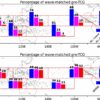Climate change and human activities strongly influence forests, but researchers have not fully understood the pervasiveness of these stressors and how they will shape future forest structure.
Forests are expected to be mostly intact in protected areas (PAs) and so-called intact forest landscapes (IFLs). However, human impacts are expanding and intensifying to affect even these areas, and the global importance of such effects remains poorly understood.
Now, researchers led by Dr. Li Wang from the Aerospace Information Research Institute (AIR) of the Chinese Academy of Sciences (CAS) have provided, for the first time, a panoramic view of global patterns in the multidimensional structure of forests. As part of their work, the researchers have discerned the relative importance of climate and human impacts as well as other environmental factors in shaping global forest structure, particularly that of PAs and IFLs.
The study was published in Nature Sustainability.
The research team provided a near-global assessment of human impacts on forest structural density using massive, high-quality, quantitative, global-scale data integrated from Global Ecosystem Dynamics Investigation (GEDI) and Moderate Resolution Imaging Spectroradiometer (MODIS) satellites.
“While acknowledging the importance of climate and other factors, we focused on the role played by human activities in shaping forest structural density at a near-global scale across all, protected, and intact forests,” said Dr. Li.
The researchers found that human impacts are the second-most important driver after climate in shaping forest structure both globally and regionally. They further showed that anthropogenic degradation is pervasive even in forest areas that are formally protected or perceived to be intact.
“Given the ways in which forests support overall function of the biosphere and serve as major repositories of biodiversity,” said Li, “the more fragile condition we find them in, the more it represents a considerable and unperceived ecological and climatic—and therefore human—risk.”
More information:
Wang Li, Human fingerprint on structural density of forests globally, Nature Sustainability (2023). DOI: 10.1038/s41893-022-01020-5. www.nature.com/articles/s41893-022-01020-5
Provided by
Chinese Academy of Sciences
Citation:
Study sheds light on how human activities shape global forest structure (2023, January 19)



